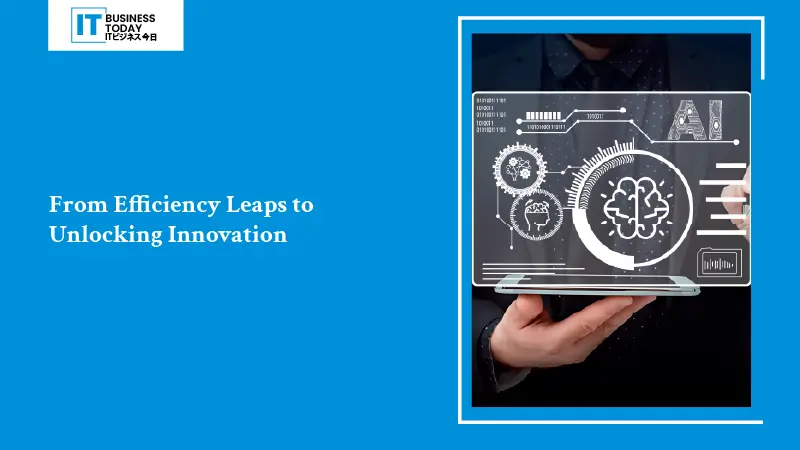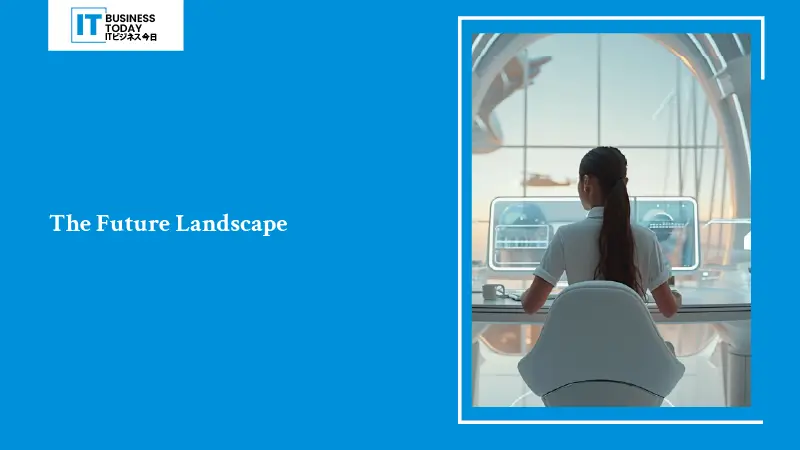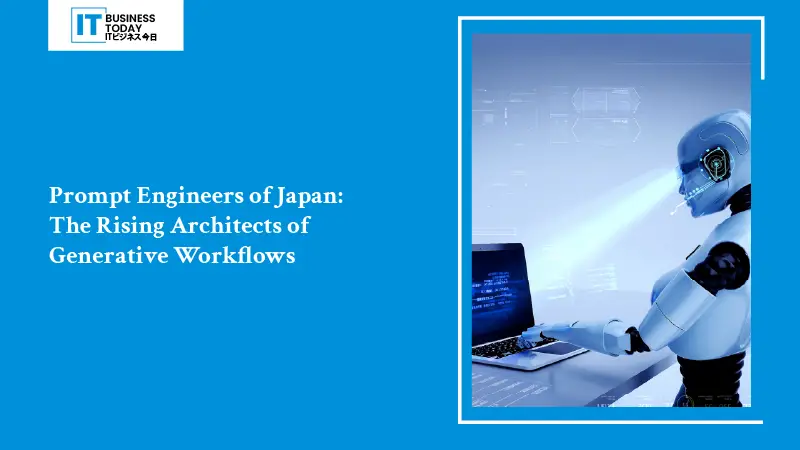新宿のロボット音や秋葉原のネオンは忘れてください。日本最大の技術革新は、工場やガジェット研究所で起こっているのではありません。プロンプト・エンジニア」という新しいタイプのプロフェッショナルが全国に出現しているのです。プロンプト・エンジニア」です。プロンプト・エンジニアは、ジェネレーティブ・ワークフローの主要な構築者となりつつあります。プロンプト・エンジニアは、エグゼクティブのアイデアをAIを活用した現実的な成果へと導きます。ビジネスリーダーは人工知能の役割を理解し、サポートする必要があります。これは将来のニーズというだけでなく、今、競争力を獲得するために不可欠なのです。
日本には、この革命を起こすのに最適な要素が混在しています。私たちは精密な職人技が大好きです。これは、迅速なエンジニアリングの慎重な作業に密接に関連しています。より良い指示は、複雑なAIモデルからより正確な結果を導きます。これは完璧を求める日本人の性格を反映しています。日本は深刻な人口問題に直面しています。人口の高齢化と労働者の減少です。曰く 世界経済フォーラム2021年には65歳以上の人口が過去最高の29.8%に達します。そのため、人間のスキルを向上させ、困難な作業を自動化する必要があります。専門家が指導するジェネレーティブAIは、強力なソリューションを提供します。
進化するプロンプト・エンジニアリングの技術
プロンプトエンジニアリングがチャットボットに質問するだけだと考えるのは大きな間違いです。それは深刻な問題を引き起こしかねません。熟練したプロンプトエンジニアは、言語、専門知識、心理学、技術スキルを融合させます。彼らは単に AI彼らは知的交流のデザイナーです。
こちらもお読みください: AIを活用した検索が従来のブラウジングを代替:GenAIがSEO、コンテンツ発見、ブランド認知をどう再定義するか
彼らは翻訳の達人です。彼らはビジネス目標という難しい言葉を理解します。
- 顧客満足度の向上
- 創薬のスピードアップ
- マーケティングを個人的なものにしましょう。
そして、これらの目標を明確で構造化された用語に変換します。これにより、大規模言語モデル(LLM)や生成AIが目標を理解しやすくなります。これには
- コンテクスチュアル・マスタリー:業界、企業のデータ、ルール、そして誰がAIのアウトプットを使うのかを知ること。たとえコア・モデルが似ていたとしても、法的契約のためのプロンプトとクリエイティブな広告コピーのためのプロンプトは同じではありません。
- 反復的改良: 完璧なプロンプトが完成することはめったにありません。仮説、テスト、分析、そして綿密な調整。エンジニアは、なぜ出力が失敗したのかをチェックします。不明確な表現なのか、文脈の欠如なのか、モデルの限界なのか。
- チェーン・オーケストレーション: 現代のジェネレイティブ・ワークフローでは、1回のプロンプトで終わることはほとんどありません。あるステップのアウトプットが次のステップのインプットになるような、複雑なシーケンス、チェーンです。プロンプトエンジニアは論理的なフローを作成します。プロンプトエンジニアは、AI機能と人間のレビュアー間のスムーズなハンドオフを実現します。複雑なレポートの自動化を考えてみましょう。データを抽出し、調査結果を要約し、ビジュアライゼーションを作成し、インサイトを作成する必要があります。各ステップには明確なプロンプトと正しい順序が必要です。
- バイアスの緩和と倫理的ガードレール: 生成AIモデルは学習データからバイアスを受け継ぎます。プロンプトエンジニアは、こうしたリスクに対する最前線の防御者です。プロンプトエンジニアは、モデルを公正、中立、正確に導くプロンプトを作成します。また、人間によるチェックと検証ステップを含むワークフローを構築します。
効率の飛躍からイノベーションの実現へ

熟練したプロンプト・エンジニアリングの価値提案は、単なるコスト削減を超越したものです。効率性の向上は明らかです。レポート作成を自動化することで、所要時間は数日から数時間に短縮されます。パーソナライズされた顧客コミュニケーションの起草は、わずか数分で完了します。しかし、真の強みは新しい機能とイノベーションのスピードアップにあります。
- 研究開発の強化:大阪の一流製薬会社の研究者がスマートプロンプトを使用。大量の科学文献や特許データを素早く分析。AIは、人間の研究者が発見するのに数週間かかるようなリンクやアイデアを発見します。これにより、創薬の初期段階が大幅にスピードアップします。
- カスタマー・エクスペリエンスの変革:東京の金融会社がプロンプトエンジニアを使ってワークフローを作成。 ジェネレーティブAI は顧客との対話をリアルタイムで分析します。これにより、リレーションシップ・マネージャーは即座に洞察を得ることができ、パーソナライズされた会話プロンプトが表示されます。その結果、サービスの質が向上し、顧客との関係がより強固なものになります。
- 複雑系解析の民主化: これまでサイロ化されていたデータ分析が利用可能になります。マーケティングチームは、詳細なオーディエンス・セグメンテーション・レポートを作成できます。人事部門は、従業員のフィードバックからセンチメントの傾向を調べることができます。サプライチェーンマネージャーは、混乱シミュレーションを実行できます。エンジニアは、技術専門家でなくても強力なAIツールを使用できるようにします。
- 大規模なコンテンツの高速化:さまざまなユーザー向けの詳細な技術文書の作成を考えてみましょう。多言語でのトレーニング資料もすぐに作れます。さらに、自然言語の指示からコード構造を起草することもできます。これらはすべて、ブランドの声と技術的な正確さを維持したまま実現します。これが、堅牢なプロンプト駆動型ワークフローが可能にするスケールです。
ジェネレーティブ・アーキテクトの育成
迅速なエンジニアリングの戦略的重要性を認識することが第一歩です。この能力を組織内で積極的に育成することが次のステップです。そのためには、視点と投資の転換が必要です:
- 社内人材の発掘と育成: 伝統的なITの枠を超えましょう。優れたコミュニケーション能力、専門分野の知識、優れた分析能力、天性の好奇心を持つ人材を探しましょう。言語学者、研究者、テクニカルライター、熟練したカスタマーサポートのスペシャリストは、基本的なスキルを共有していることが多いものです。プロンプト・エンジニアリング、主要なAIツール、倫理についてトレーニングしてください。日本国内で台頭しつつある専門トレーニングプロバイダーとの提携も検討してください。実際に arXiv 2025年半ばに、有能なプロンプトエンジニアはAI知識(22.8%)、コミュニケーションスキル(21.9%)、プロンプト設計(18.7%)、創造的問題解決(15.8%)を兼ね備えており、この役割がいかに複数の分野を融合しているかが明らかになりました。
- 分離ではなく統合: プロンプトエンジニアは一匹狼ではありません。その成功は、事業部門、専門家、データサイエンティスト、ITセキュリティとの良好なチームワークにかかっています。コラボレーションのための明確なチャネルを確立します。プロンプトエンジニアを製品チーム、マーケティング、研究開発ラボに配置します。彼らのスキルは、主要な目標を直接サポートするものでなければなりません。
- 適切なインフラへの投資:高度なAIプラットフォームへのアクセスを確保します。クラウドベースのオプションを使用し、機密データには安全なプライベートインスタンスを使用します。また、テストと展開に必要な計算リソースを提供します。
彼らにツールを与えてください:
-
- バージョンプロンプト
- プロンプト・バリエーションのパフォーマンス・メトリクスの追跡
- ワークフロー設計のコラボレーション
- ガバナンスの枠組みの構築:データの使用、モデルの選択、出力チェック、知的財産、倫理的制限に関する明確なルールを作成します。プロンプトエンジニアがワークフロー内で責任を持ってAIを使用するための提唱者となるように権限を与えます。定期的な監査と人間によるチェックポイントは譲れません。
- 活動だけでなく価値を測定: ビジネス成果にリンクする明確なKPIを定義します。
以下のような指標を追跡します:
-
- 時間の節約
- コスト削減
- 自動化タスクのエラー率
- イノベーション・スループットの向上(新しいアイデアの創出など)
- ジェネレーティブなワークフローと連動した顧客満足度の向上。
迅速なエンジニアリング投資のROIを定量化します。
未来の風景

プロンプトエンジニアの役割は、今後も急速に進化していくでしょう。AIモデルがより賢くなれば、複雑なタスクにも対応できるようになります。
このシフトの焦点は
- ワークフローの設計
- AI利用計画
- 異なるモデルの連携管理
モデルの限界を知り、それぞれの作業に適したツールを選ぶことが重要です。
高度なノーコードおよびローコードプラットフォームは、「市民プロンプトエンジニア」にも力を与えます。これらのエンジニアは、より簡単なワークフローを作成できる、ある程度のトレーニングを受けたドメインの専門家です。プロンプト・エンジニアは非常に重要です。彼らはオーケストレーションの深いスキルをもたらし、バイアスを減らすのに役立ちます。この役割は、この分野における戦略の重要な部分になるでしょう。日本はまだ、個人や組織の導入において、米国や中国などの国々に遅れをとっています。A 遺伝子組み換え研究 2025年初頭の調査によると、ジェネレーティブAIの積極的な利用を報告した日本のユーザーはわずか42.5%に過ぎず、中国では80%を超えました。企業側では、日本の企業のわずか9.1%が現在ジェネレーティブAIを使用しています。52%)はまだ計画段階。このことは、スキル構築とリーダーシップ主導の投資が急務であることを示唆しています。
行動への呼びかけ
ジェネレーティブAIは観戦スポーツではありません。日本企業にとっての可能性は非常に大きい。生産性を高め、イノベーションを喚起し、比類のない顧客価値を提供することができます。プロンプト・エンジニアと呼ばれる熟練した通訳者、入念なデザイナー、インタラクション・アーキテクトがいなければ、この可能性は生かされません。
日本のビジネスリーダーに課せられた使命は明確です。このような重要なプロフェッショナルを積極的に発掘し、育成し、力を与えること。戦略的イニシアチブの基盤に彼らを組み込んでください。彼らに必要なツール、職務権限、経営陣のスポンサーシップを提供しましょう。プロンプト・エンジニアリングは重要なリンクです。プロンプト・エンジニアリングは、ジェネレーティブAIの強みを実際のビジネス価値につなげます。
サイレント革命が進行中。あなたの組織はアーキテクトに導かれるのでしょうか?それとも、他人の設計図に翻弄されるのでしょうか?未来の競争は、今日の敏腕エンジニアによって形作られます。彼らに投資し、日本の闊達な未来に決定的な投資をしてください。今こそ、綿密に練られたプロンプトを1つずつ作り上げ、優位性を築く時です。自分のスキルを評価し、最高のワークフローを見つけ、成功のためのアーキテクトの育成を始めましょう。







